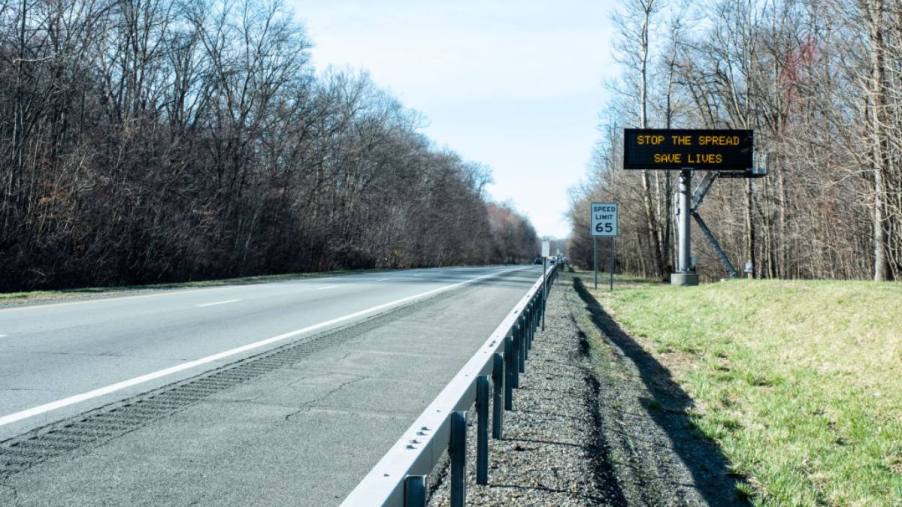
You Could Easily Walk the Shortest Interstates in the United States
Traveling along an interstate might conjure thoughts of long road trips traversing hundreds of miles, but there are exceptions. Some interstates in the U.S. can be traversed in mere minutes at highway speeds, and some are so short you could feasibly travel their distances by foot. Below are some of the shortest interstates in the United States.
I-878 in New York is less than a mile long
At just 0.7-miles long, I-878 in New York, just north of Long Beach, is officially the country’s shortest interstate. I-878 spans its full distance of less than three-quarters of a mile from I-678 to the JFK Expressway exclusively for eastbound traffic.
Though I-878 earns the official designation of being the United States’ shortest interstate, there is a caveat as the roadway isn’t “signed” as an interstate (per Kurumi).
I-878’s status is hinted at by its three-digit designation, which are typically shorter than two-digit interstates.
Even walking at a leisurely pace of two miles per hour, you could traverse the length of this interstate nearly three times over the course of 60 minutes. However, you wouldn’t walk to this route.
Not only is it not a good idea to walk along any highway, I-878 is included in the highly-trafficked New York State Route 878, which runs east/west from Long Island to New York City.
I-87 in North Carolina is also hilariously short
Perhaps there’s something in the “87” designation of interstates, because the shortest two-digit, or “primary,” interstate in the U.S. is I-87.
I-87 spans 12.9 miles to east-west traffic near Raleigh, North Carolina. Walk this route and you will still need to move a few more blocks to even log a half-marathon distance.
However, I-87 is still under construction, so it will eventually lose its status as the shortest primary interstate highway in the U.S. The full route of I-87 upon completion is slated to run from Raleigh to Norfolk, Virginia, a distance of more than 200 miles.
What is the difference between two and three-digit highways?
The Interstate Highway System’s route designations may seem like a fairly arbitrary jumble of letters and numbers, but there is a method to the madness. Odd-numbered routes, such as I-75, run north to south, in this instance from Miami, Florida, to the Canadian border.
Interstates with higher odd-number designations are found in the east while lower numbers are more westerly. Even-numbered interstates run east-west, like I-20 running from Texas to South Carolina, with lower numbers in the south and higher figures in the north.
This effectively creates a grid system, but there are other methods for designating interstates by their relative size by noting whether they use one-, two- or three-digit numbers.
Interstates with one or two numbers are considered “primary” routes and generally span greater distances. The most notable of these interstates will end with a zero or five, for instance, I-10 from California to Florida. Two-digit interstates with numbers that don’t end in zero or five, like I-26, are considered medium highways.
Three-digit highways are considered “minor” routes. These highways can serve as bypasses or spurs connecting to medium or primary interstates.



